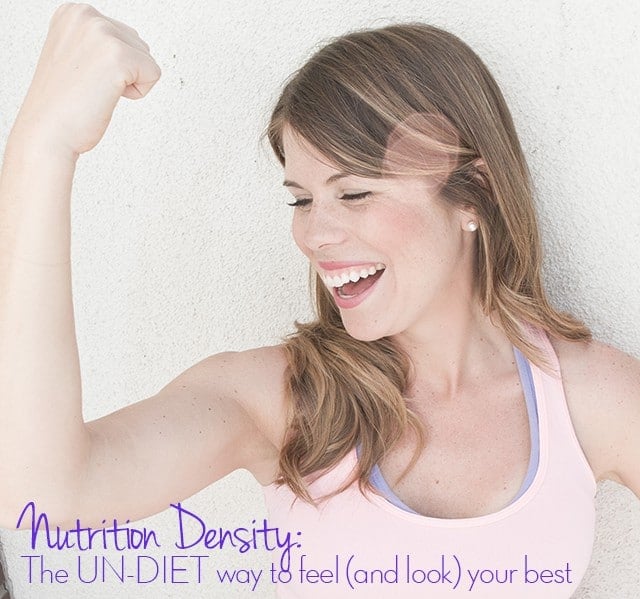Nutrient Dense Eating: The Un-Diet Approach
Nutrient-dense eating aka the UN-DIET approach is, in my opinion, a much more preferred way to eat. A way to enjoy food, focus on nutrition and not feel like a slave to calorie counting, dieting, and deprivation.
In the past five years of seeing clients for weight loss, I can count on two hands the number of times I’ve given out calorie counts and meal plans. It’s not that my clients don’t want this information; rather, I don’t find it the most effective path for helping them achieve their ultimate goal: weight loss and satisfaction from foods.
It’s one thing to cut calories, it’s another to feel satisfied and nourished from foods. I find that when my clients restrict their caloric intake by reducing portion size or skipping snacks, they do ok for a while… until they don’t. Until they overeat at lunch one day and find that they can’t stop. Or they give up, because counting calories is too tedious and clients would rather feel liberated with food, not burdened. I understand all of these normal feelings associated with dieting and the best part is, there’s an easier way.
Enter the principle of nutrient dense eating. Or, as I like to call it, “the biggest bang for your calorie buck”. Nutrient density examines the quantity of nutrients you receive from a food given the number of calories it contains. It’s a simple way to balance nutrients with calories. Simply stated, we should emphasize foods in our diet that are rich in vitamins, minerals, phytochemicals and antioxidants- and low in calories. Examples include fresh fruit, vegetables, and whole grains. The best part is that almost all foods can fit into this plan. Craving a bowl of fettuccini? Me too! Add in some nutrient dense vegetables and a side salad. You still get to enjoy the flavor, texture, and comfort of pasta while filling up on fiber & water-rich vegetables.
Nutrient density works as a weight loss/weight management tool because it doesn’t feel as restrictive. You still get to enjoy your favorite foods by dressing them up with nutrient dense ingredients. A great example of this is stir-fry. I don’t know about you, but I love stir-fry, and we eat it a few times a week. Traditional ingredients include: rice, vegetables and a protein. If I was going to serve a normal size portion of 5 oz. protein, 1 cup rice, and 1 cup vegetables and sauce, that would be around 400 calories. A nutrient dense portion would be 4 oz. protein, ½ cup of rice and 2 cups of vegetables with sauce. It’s the same amount of food with fewer calories. You are still enjoying the same type and volume of favorite foods, just switching up the ratio.
Why does nutrient density work for weight loss? Volume and fullness are important factors in satiety. As we start to digest food, our stomach gradually expands, sending a fullness message to the brain and therefore reducing the desire to eat. This signal is more pronounced when we are eating filling foods, those that contain fiber and those that contain protein and fat. Of all the macronutrients, protein is the most satiating. This is why you will still feel full after eating the nutrient-dense stir-fry. The amount of calories you consume doesn’t factor into the feeling of fullness; rather, the type and volume of foods are more important.
Nutrient dense eating cancels out the deprivation factor of traditional weight loss diets. Calories count, but if we cut out too much we are left tired, hungry, irritable, and much more likely to overeat at the next meal. Feeling satisfied is so important to having a healthy relationship with food. By choosing nutrient dense foods, you can fill up without adding extra calories. You get the benefits of a traditional diet plan, without feeling like you are actually on a diet.
Looking for more Nutrient Dense Recipes?
Categories to get you started: Salad, Soup, Side Dishes and Vegetables, Smoothies, Meals


